Abstract
The statistical procedure for discriminating between a Down syndrome or neural tube defect (NTD) fetus and a normal fetus relies, to a great extent, on the reporting of maternal serum alpha-fetoprotein (MSAFP), hCG, and uE3 results in the form of multiples of the median (MoMs). Further, threshold MoMs values for MSAFP, such as 2.5 MoMs, are often used to define a reference range to identify an NTD fetus. We show that a constant threshold-MoMs cutoff for MSAFP values actually refers to different percentiles of MSAFP levels at different gestational ages and that the combining of MoMs values between centers and gestational ages, such as suggested by Wald et al. for deriving a patient-specific risk index, is highly questionable. The results presented in this paper are quite general and will apply to all situations where MoMs are used.
Full text
PDF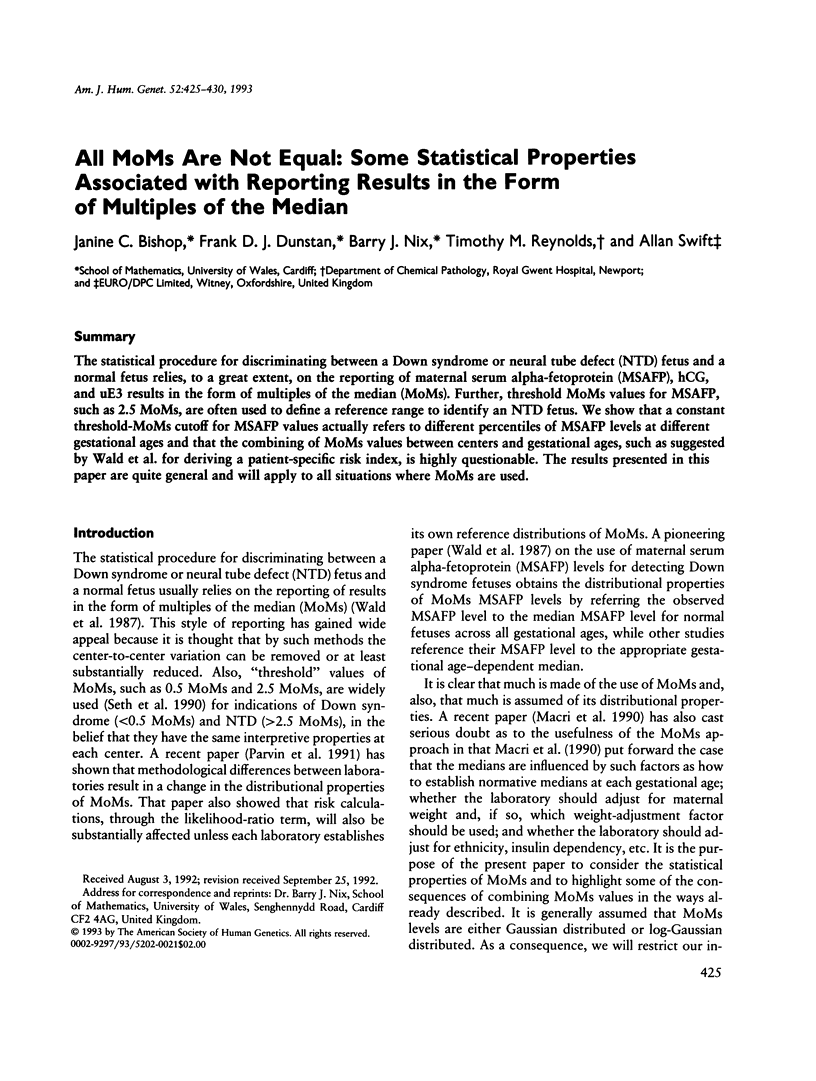
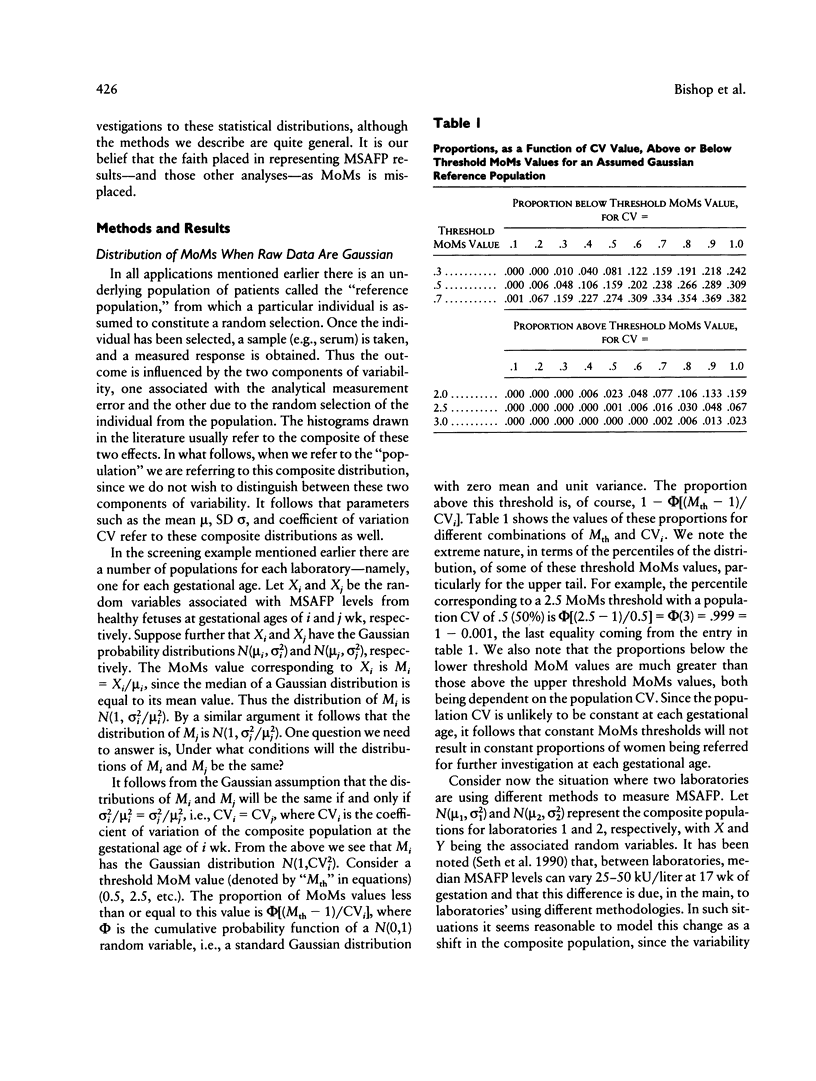
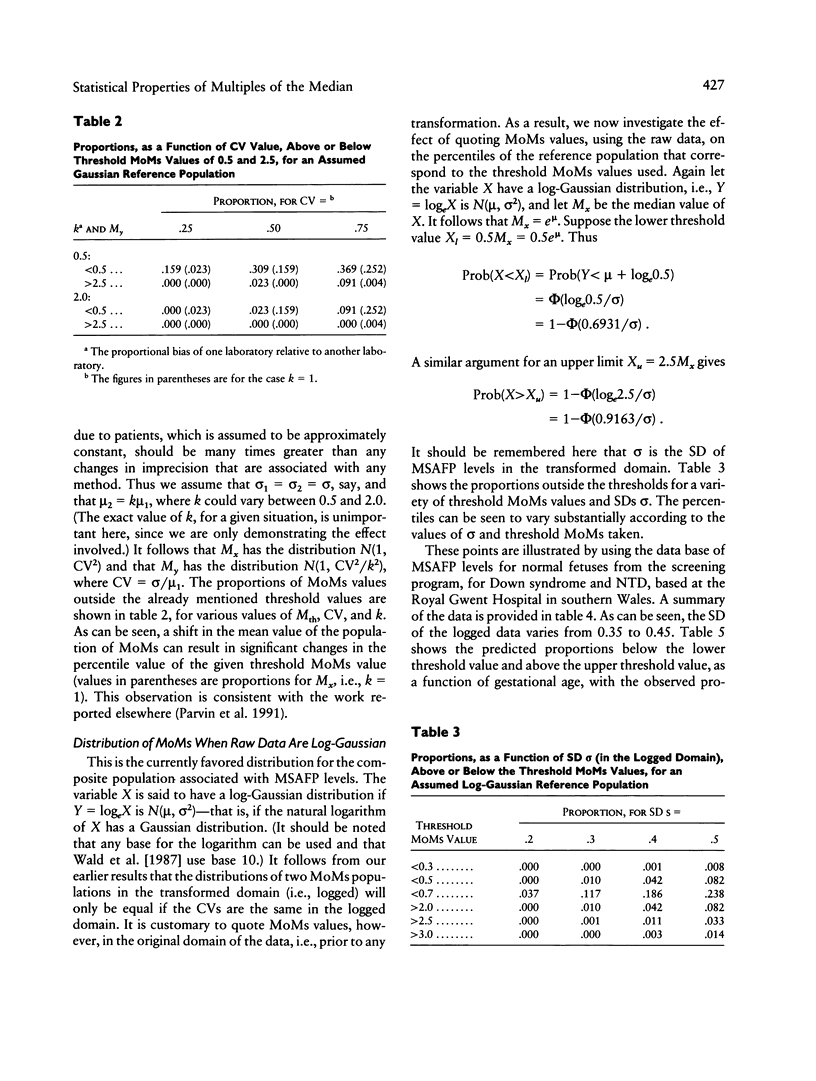
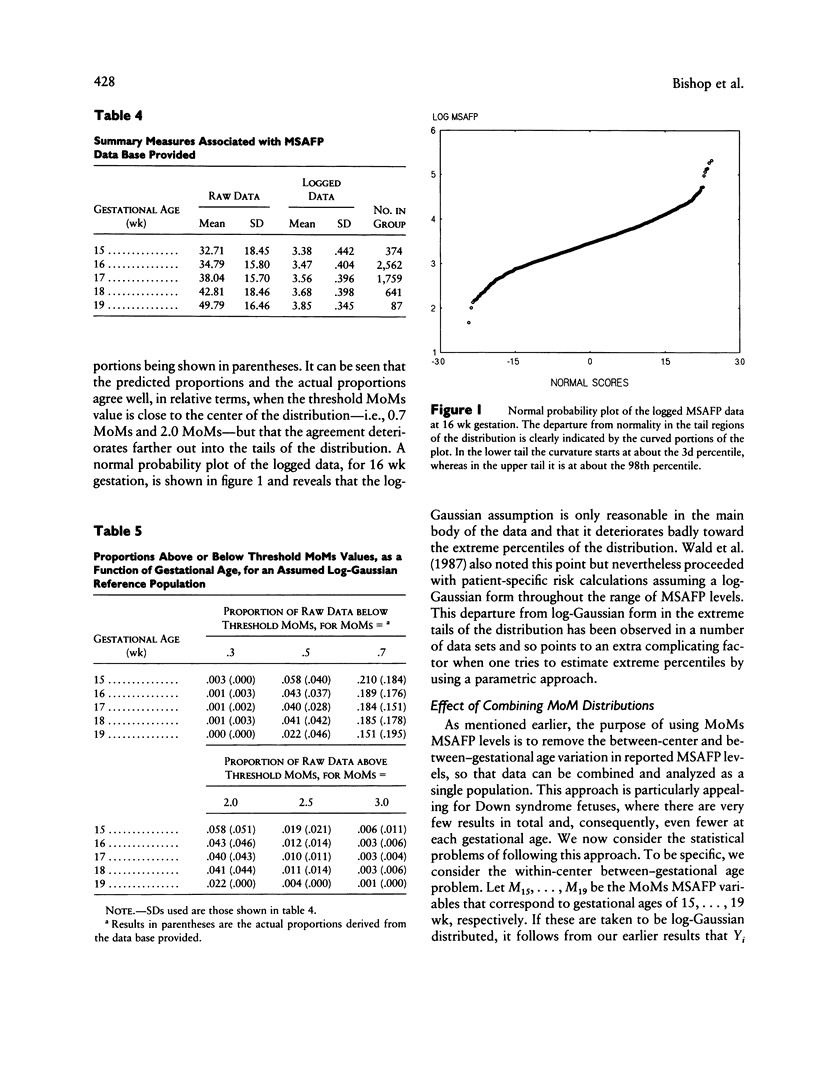
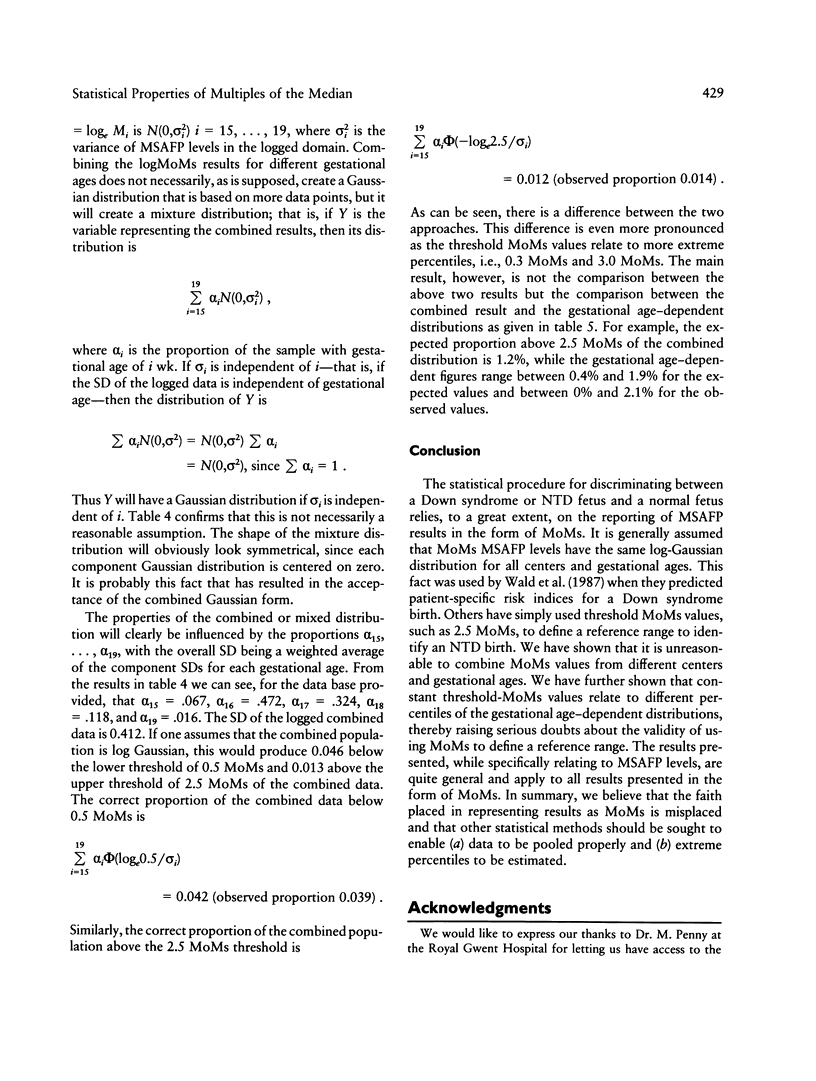
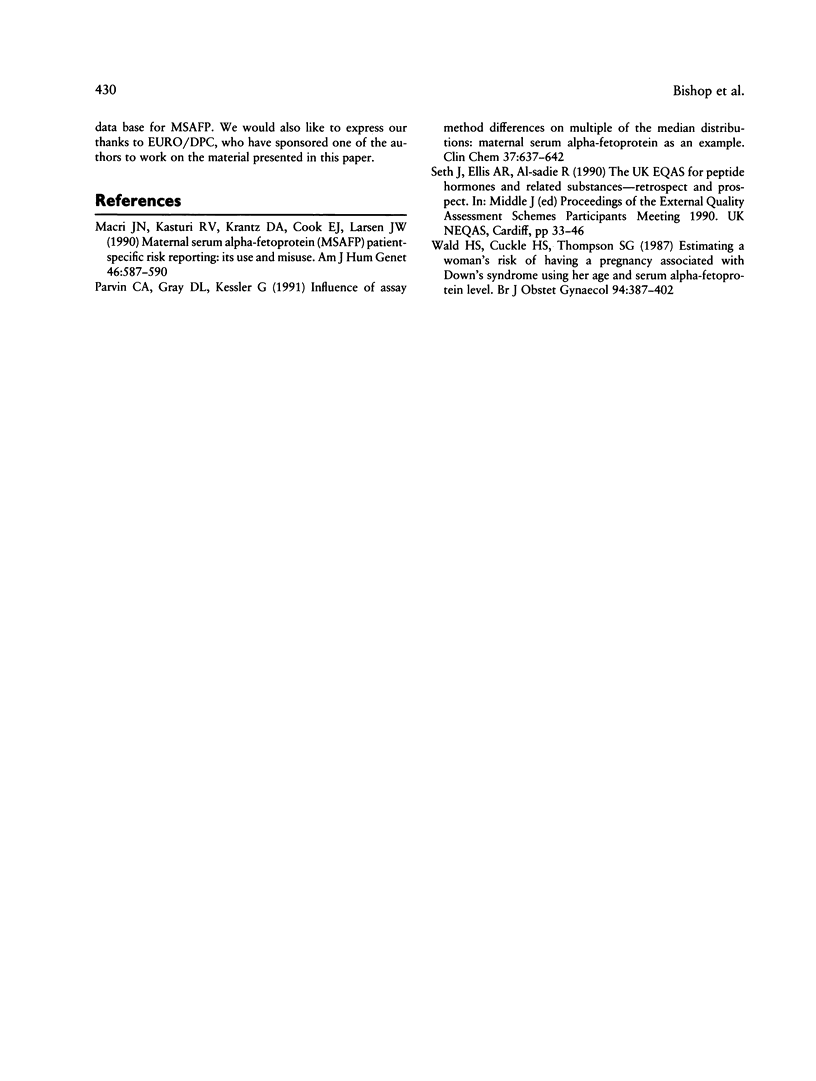
Selected References
These references are in PubMed. This may not be the complete list of references from this article.
- Cuckle H. S., Wald N. J., Thompson S. G. Estimating a woman's risk of having a pregnancy associated with Down's syndrome using her age and serum alpha-fetoprotein level. Br J Obstet Gynaecol. 1987 May;94(5):387–402. doi: 10.1111/j.1471-0528.1987.tb03115.x. [DOI] [PubMed] [Google Scholar]
- Macri J. N., Kasturi R. V., Krantz D. A., Cook E. J., Larsen J. W. Maternal serum alpha-fetoprotein (MSAFP) patient-specific risk reporting: its use and misuse. Am J Hum Genet. 1990 Mar;46(3):587–590. [PMC free article] [PubMed] [Google Scholar]
- Parvin C. A., Gray D. L., Kessler G. Influence of assay method differences on multiple of the median distributions: maternal serum alpha-fetoprotein as an example. Clin Chem. 1991 May;37(5):637–642. [PubMed] [Google Scholar]


